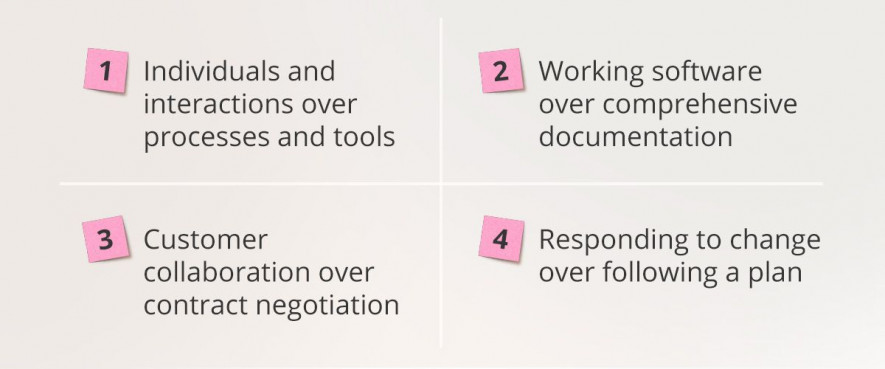- QATestLab Blog >
- QA Management >
- Project Management Methodologies >
- SCRUM Testing: Change the system, not people
When customers want quick fixes and faster updates, it is time to think about alternative ways to organize workflow within a team. Being a set of simple rules to solve complex problems, SCRUM can be an easy-to-implement solution to give excellent results in a limited time. Let’s figure out what SCRUM is and what challenges you may face while using it. This article will be helpful for everyone organizing workflow within a team and Scrum QA testing team in particular.
SCRUM: Understanding the essence of the term
Being a smaller yet essential part of the Agile philosophy, SCRUM implies an effective approach to project management and the process of collaborating with all members of a team and customers as well. The approach was created on top of four core values described in the Agile-manifesto that state:

The methodology was created by Jeff Sutherland in 1993, who claims that Scrum is the art of doing twice the work in half the time.
A few words about word’s origin: in rugby football, scrum means a figure made by a team before the start of the game. So, the central meaning of this concept lies in the state of being together and moving forward to victory.

Scrum software development is the most popular variation of the application, but you can also see its implementation everywhere. What does it give? It helps to analyze previous challenges, learn the principles of self-organization, and, most importantly, focus on finding the right solution to a problem.
There are three key parts of Scrum: sprint-planning sessions, daily standup meetings, and sprint retrospectives. For this, Scrum team members use specialized tools and take on particular roles to organize and manage the work. To learn more about this, we recommend reading Scrum: The Art of Doing Twice the Work in Half the Time.
How does Scrum help to Set a Powerful Strategy?
When something goes wrong, we tend to blame someone else. Owners are scolding lazy contractors, programmers scolding dull customers. Who is right? All are mistaken. People tend to blame other people, but not the system. It’s easier. Putting efforts to solve problems requires changing our habits, which is a big obstacle.
Scrum makes it clear: the system can do wonders with your employees. For approving this, there are various examples from history. For instance, the Toyota plant was closed in 1982 because of the low productivity of workers. Two years later, the plant was reopened, and the old workers were brought back, the only thing that changed was management. Where is Toyota now, you know the answer. People remained the same – the system changed.
Why is SCRUM good for the software testing team?
First of all, SCRUM mitigates the problem of missing documentation and establishes better communication in a team: tasks are set gradually and formulated clearly, communication with a customer representative is constantly maintained, and it is much easier to understand the project. Parallel to this, you can always build up your test documentation.
Software testing and quality assurance procedures begin slightly later than development. For this, Scrum allows us to be in the context of the project from the very beginning and greatly simplifies the work of everyone. In such a way, we can promptly discuss all rapid changes from customers and accept (or not) collectively every detail with the Team Lead. Over time, all these actions help to understand what is possible and what is not.
SCRUM in QA: How to escape possible challenges?
If you are just starting to implement SCRUM in QA projects, it is quite possible that you may run into difficulties. Here are some tips and questions that you need to clarify:
- Does the team cope with the task?
- Are you performing precisely what the customer expects from you?
- Is testing planned separately or together with developers?
- Who and how monitors the product after release?
- How to choose features for automation and how to integrate automation into the testing process?
- Are there any ways to improve development methods and do the work most efficiently and quickly?
- Are there barriers to your tasks?
It is essential to continually observe these points both at the beginning and during the Sprint. The answers to these questions should tell you whether you need to revise the testing strategy or highlight personal vectors of development for a team. We hope these simple tips will help you. If you want to share your own experience with Scrum in QA, please feel free to share it in the comments below.
Learn more from QATestLab
Related Posts:
- FinTech in 2020: How To Stay Ahead Of The Curve And Be Successful
- The Qualities of Good SCRUM Master
- Key QA & Game Testing Takeaways from Paris Games Week 2025
About Article Author
view more articles
has more than 2-year experience in blogging and copywriting, copyediting and proofreading of web content.
View More Articles







No Comments Yet!
You can be the one to start a conversation.